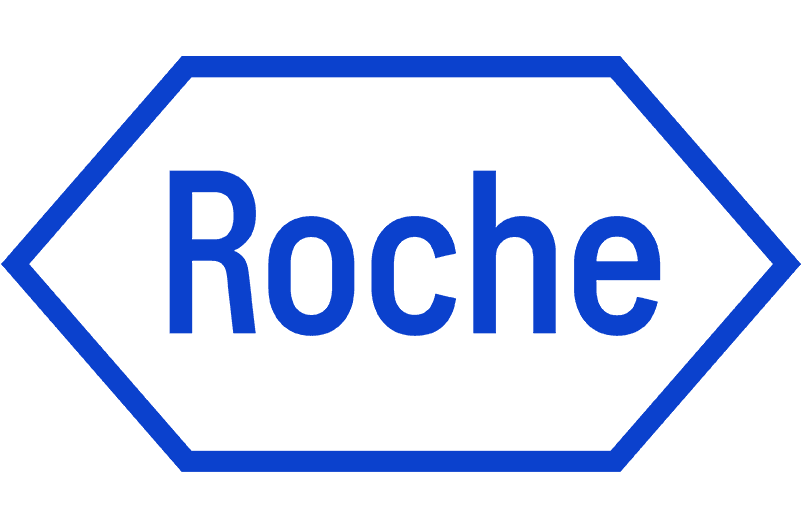Q&A with Dr. Patrik Brundin

Tell us about yourself — what is your background in and how did you end up in your current position?
My father developed Parkinson’s disease when I was about 13. I had this very naive idea that I was going to do something about it, and at that age, I think I wanted to become a medical researcher and a soccer player. Shortly thereafter, I gave up my soccer player ambitions, and then I continued with this idea that I should do something about Parkinson’s.
When I was 17 years old, for my International Baccalaureate, I had to write an extended essay and I chose to write about Parkinson’s. I still remember to this day that I knew absolutely nothing about the brain at the time, I didn’t even know what a nerve cell was! As part of my extended essay, I performed some experiments at Cardiff University– I worked in a lab with animal models, where we used manganese to trigger the development of Parkinson-like brain changes in rats.
In 1981, while attending medical school in Sweden, I met the person who was going to become my supervisor, Professor Anders Björklund. He is a world renowned Parkinson’s researcher working with brain cell transplants. I worked with him on my PhD thesis trying to improve the transplantation technique in experimental animals. Finally, in 1989, we successfully transplanted, for the first time, immature brain cells to the brains of Parkinson’s disease patients and saw them grow into the brain: improving the symptoms of the patients. I was very lucky to be in that environment because it felt like I was a part of medical history being made.
After finishing my MD in 1992, I continued to perform research in Sweden, building my own team and becoming a professor in 2000. In 2010, I received an email from a recruitment company in the United States; they were looking for someone who could build and direct a new Parkinson’s center in a private institute, the Van Andel Institute.
You’ve been at the Van Andel Institute for the past 10 years: what has been your experience and the focus of your work there?
In January 2012, my family made the move to Grand Rapids, Michigan, and I started building the new Parkinson’s research team. We recruited several professors to do research with a focus on Parkinson’s, and took a multidisciplinary approach. The center had research on genetic and epigenetic causes for Parkinson’s, others were more focused on environmental courses, some on inflammation or understanding the circuitry affected by the disease.
In parallel, we’ve also built up an excellent network with Parkinson’s patients and advocates, both locally and globally. We have put on a conference every year that assembles advocates — we bring in about 75 to 100 people who either have Parkinson’s, impacted family members to tell their stories, major foundations and sponsors of Parkinson’s research all come for a two-day workshop. This meeting has taken place in parallel to a scientific workshop with over 200 participants and top speakers from all over the world, called Grand Challenges in Parkinson’s Disease.
In addition to directing the research center, starting in 2012 when I moved to Van Andel Institute, I have been the chairperson of a program called an International Linked Clinical Trials Program (iLCT). Together with a foundation in England called Cure Parkinson’s, every year we have scientifically reviewed drugs that, based on laboratory studies and epidemiological findings, have the potential to slow progression of Parkinson’s disease. These are drugs that currently are being used in, for example, diabetes, inflammation, cardiovascular disease, oncology, etc, but that also have features that potentially make them suitable for what’s called drug repurposing.
From 2014 onwards, our institute has generously supported the iLCT drug repurposing program. I am particularly proud of that because we now have two drugs that after these 10 years are going into the final stage of clinical trials: phase three. One of them was actually the very first drug we selected in 2012, an anti-diabetic drug. One has to realize that today there is not a single drug on the market that slows progression of Parkinson’s disease. If either of these drugs were to show efficacy in the Phase III trials, it would be a major breakthrough. It’s a cool thing — big drug companies develop new drugs at an exceptionally high cost, but here we took things that were already in the pharmacy and repurposed them in trials at a relatively low cost.

You’re starting a new role at Roche: what kind of work will you be doing there and how does it differ from your previous positions at a research institution?
Roche is one of the two largest pharma companies that has a focus on the brain. They wanted somebody to lead work on movement disorders, which includes Parkinson’s disease and a genetic disorder called Huntington’s disease, which I have also worked extensively on earlier in my career. So here I am: still doing the same thing as when I was 13. My formal title is Therapeutic Area Leader for Movement Disorders, and I will be responsible for discovery and early drug development, up to the Phase II trial stage.
This is a dream for me, as you can imagine, I’ve been on this mission for many, many years now. I feel like I couldn’t have better resources or better people around me than at Roche. It is an amazing, science-driven company. This is the sort of environment where you really can develop new therapies, which is my goal.
As an academic researcher, I have been used to applying for grants for all our projects, including the National Institutes of Health and The Michael J Fox Foundation. In the corporate world, profits are reinvested into research and development of the next generation of treatments. We have to prioritize how we use these resources internally, but I believe we will have more time to read, think and discuss what the best ways forward are, and how we are most likely to improve the lives of the families that are affected by these devastating neurodegenerative diseases. Currently, I am in an institute with around 500 employees, and I’m going to a multinational company that has 100,000 employees; so also in this way it will be a different world. I feel very fortunate to join Roche relatively late in my career. It means I will have a leadership role and directly influence the direction the team takes.
One of your specialities is the use of animal models: how is their application different in research for neurodegenerative diseases? Which models do you find most useful?
There are several animal models for Parkinson’s disease, and none of them are perfect. I think it’s a difficult question to answer without getting bogged down in scientific details, but I should say that Parkinson’s disease is a far more complex disease than most people might think. We mostly think of it as a disease of movement, so there are several models that mimic the brain damage that is coupled to movement deficits. However, Parkinson’s disease comes with a wide variety of non-motor symptoms. Parkinson’s patients have issues with depression, constipation, loss of sense of smell and, towards the later parts of the disease, they often have issues with cognition.
Each model will typically be tailor-made to address different aspects of this complicated syndrome. The different models can exhibit one or several features that are relevant to Parkinson’s disease. So in addition to models of motor dysfunction, now there also exist models of constipation, loss of a sense of smell, cognitive decline and so on. Some of these models approach the disease based on the functional deficits, but another way to create models is to try to mimic the different processes that occur inside the brain in Parkinson’s. Very roughly, we can divide those processes into three groups: inflammation, mitochondrial failure and buildup of protein clumps, and all of these can be associated with brain cell death.
The model that a researcher chooses to use in the laboratory is typically selected based on the specific scientific question that is being asked.
What promising discoveries are on the horizon for Parkinson’s research?
It might sound foolish, but I am extremely optimistic, especially considering that nothing has worked so far. Of course, the Holy Grail for the research is not to just reduce symptoms with symptomatic therapy, but slow the progression of the disease. Parkinson’s develops slowly, over the course of 10–30 years. If we could have a drug that slowed that decline, even by 50%, it would be a major step forward. We want to give the persons affected a better quality of life, extend the time they might continue to work, and reduce the challenges that the disease poses to the whole family.
The other thing I’m very excited about is connected to the very beginning, when I was a graduate student– the possibility to transplant brain cells. I think it could be possible to repair the brain of an individual afflicted with Parkinson’s. Now researchers are using stem cells to make immature brain cells that can be transplanted to the brain. I will not be working with this approach at Roche, but several other companies are now investing in this stem cell technology with the aim of developing a transplantation therapy for Parkinson’s disease.
How have neurodegenerative diseases traditionally been investigated, and have you noticed any changes to therapeutic research/funding?
There have been several major changes that have accelerated in the past decade! Traditionally, it was all about the motor symptoms: the inability to move, stiff/slow movements and tremors. As I mentioned earlier, those are the three cardinal symptoms that most people think about when it comes to Parkinson’s. Until about 2005, less attention was given to the other symptoms: for example constipation, anxiety, depression, cognitive decline and losing the sense of smell. Over recent years, our understanding of the non-motor symptoms has increased exponentially and funding agencies have recognized how important they are, and are investing in experimental therapies targeting these symptoms.
In addition to the large funding bodies, e.g. National Institutes of Health and European Union, there have been very important contributions from private foundations. The Michael J. Fox Foundation came about just over 20 years ago, and it has been instrumental in funding Parkinson’s research. They have invested $80–100 million per year in philanthropy turned towards trying to develop therapies. Sergey Brin, the co-founder of Google, recently founded Aligning Science Across Parkinson’s (ASAP), which now supports a very large and global effort focused on understanding the disease processes.
Are you finding Parkinson’s treatment more effective through medtech or molecular therapies?
Over the past 55 years there have only been two therapies developed that are both truly effective in Parkinson’s disease and that are fundamentally different to each other. They both reduce symptoms, but do not alter the course of the disease. The first one was the groundbreaking discovery actually in Sweden around 1958; you can give a drug called L-Dopa and that will acutely, for a few hours, reduce the symptoms. L-Dopa is converted into dopamine in the brain, reducing motor deficits, and it was this fundamentally important finding that Arvid Carlsson received the Nobel Prize for in 2000.
The second very important discovery is that one can stick electrodes into the brain, wired to a pacemaker-like battery and stimulate certain brain circuits and acutely improve the motor symptoms. This was a discovery jointly made by Mahlon DeLong at Emory University and Alim-Louis Benabid in Grenoble, France. They shared the Lasker-DeBakey Clinical Medical Research Award for the development of “deep brain stimulation” in 2014. Both of these discoveries represent major advances that led to improvements in the lives of people affected by Parkinson’s disease. Notably, the first one (L-Dopa) is a molecular approach, the second one (deep brain stimulation) is medtech.
For the future, I think both “molecular” and “medtech” therapies hold great promise. Some experimental therapies, such as gene therapy (e.g. aimed at modifying genes in brain cells to prevent them from dying) are really a hybrid of the two approaches.
What are some of the realities of lab research that the average person doesn’t understand?
I think the complexity of understanding brain diseases is perhaps not fully appreciated. To begin with, understanding the brain in itself is very complicated and we’re only scratching the surface. If one superimposes on top of that, a disease process that we also do not fully understand, it becomes extremely challenging. In addition, the time it takes to perform experiments that are supposed to mimic slowly progressing brain disorders makes this type of research particularly frustrating!
My late mother also never fully understood why we had not cracked Parkinson’s disease after so many years of work. She sometimes said to me, “You know, you’ve been doing the same thing all the time, aren’t you done?” One of our sons was about 10 years old when he said to me, “Dad you keep on saying you’ve been doing this for about 40 years and still you haven’t solved Parkinson’s disease– that’s not very good!”. I hope that one day also he will feel that all the research has not been in vain!
Another aspect of medical research that perhaps is not fully appreciated by the public is that our jobs are to ensure that we constantly are “incompetent”. We must constantly push the envelope, and not just work on things that we fully master. Maybe that’s the best message: As a scientist, one always has to leave one’s comfort zone. One should always venture onto snow where no one else has put their footprints, otherwise one is just standing still. Some people would find that stressful. Others enjoy it.



